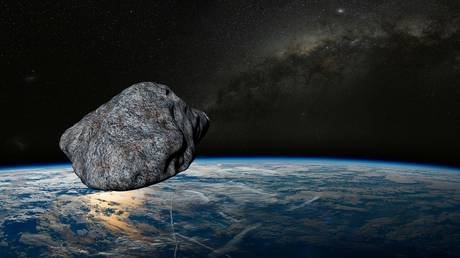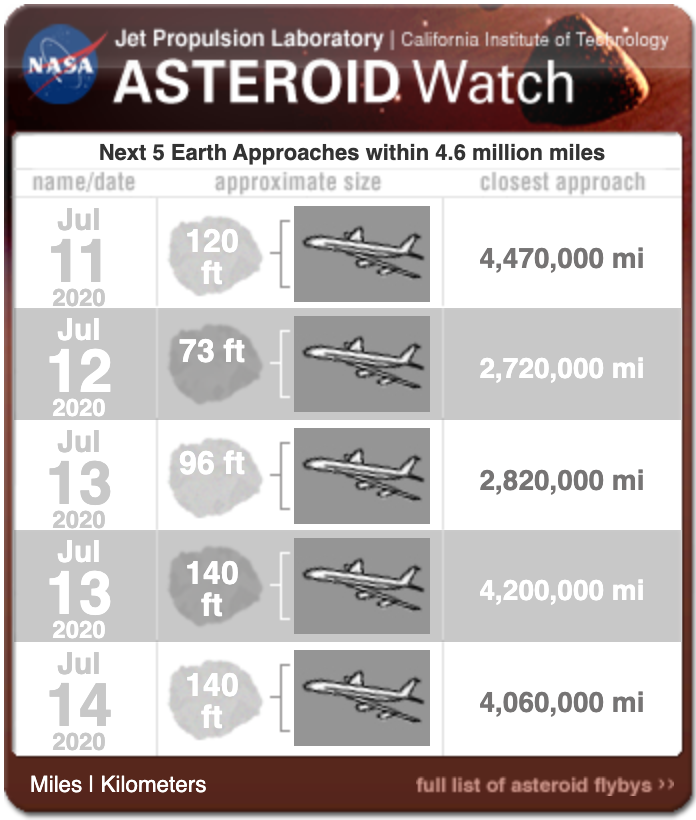
NASA’s asteroid watchers have given a heads-up about five asteroids headed toward Earth in the coming days, while the agency’s automated Sentry system has identified the space rock which has the highest chance of impact.
Over this weekend, two asteroids – 2020 MU1 (120ft diameter or half the wingspan of a 747 jet) and 2020 ML (73ft diameter, roughly half the height of the Arc de Triomphe in Paris) – are expected to shoot past us at a distance of 4.4 million and 2.7 million miles respectively.

Lest anyone get too comfortable and breathe a sigh of relief, however, NASA warns that a further three space rocks are expected in these parts next week.
On July 13, 2020 KJ7 (96ft, half height of the leaning tower of Pisa) and 2009 OS5 (140ft, half the height of the Statue of Liberty) are charted to pass us at 2.8 and 4.2 million miles. These will be followed shortly afterwards by 2020 MQ (140ft) at a distance of four million miles.
To put that into perspective, the average distance between Earth and the moon is about 239,000 miles (385,000 kilometers).
Meanwhile Sentry, NASA’s impact monitoring system, has identified the asteroid with the highest likelihood (that we know of at present) of hitting the Earth.
Asteroid 2012 HG2 is estimated to have 469 chances for potential impacts between 2052 and 2119, the earliest of which could happen on February 12, 2052.
“Sentry is a highly automated collision monitoring system that continually scans the most current asteroid catalog for possibilities of future impact with Earth over the next 100 years,” NASA explained in a statement.
With a diameter of about 46 feet, there is no danger of 2012 HG2 hitting the ground as it is simply too small and would likely burn up in the atmosphere, providing some spectacular ‘fireworks’.
It is expected to pass Earth on October 22 this year, at a comfortable distance of 33 million miles.
Like this story? Share it with a friend!
Subscribe to RT newsletter to get stories the mainstream media won’t tell you.




